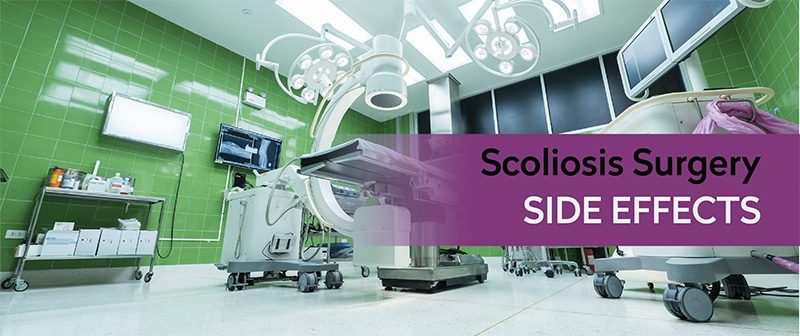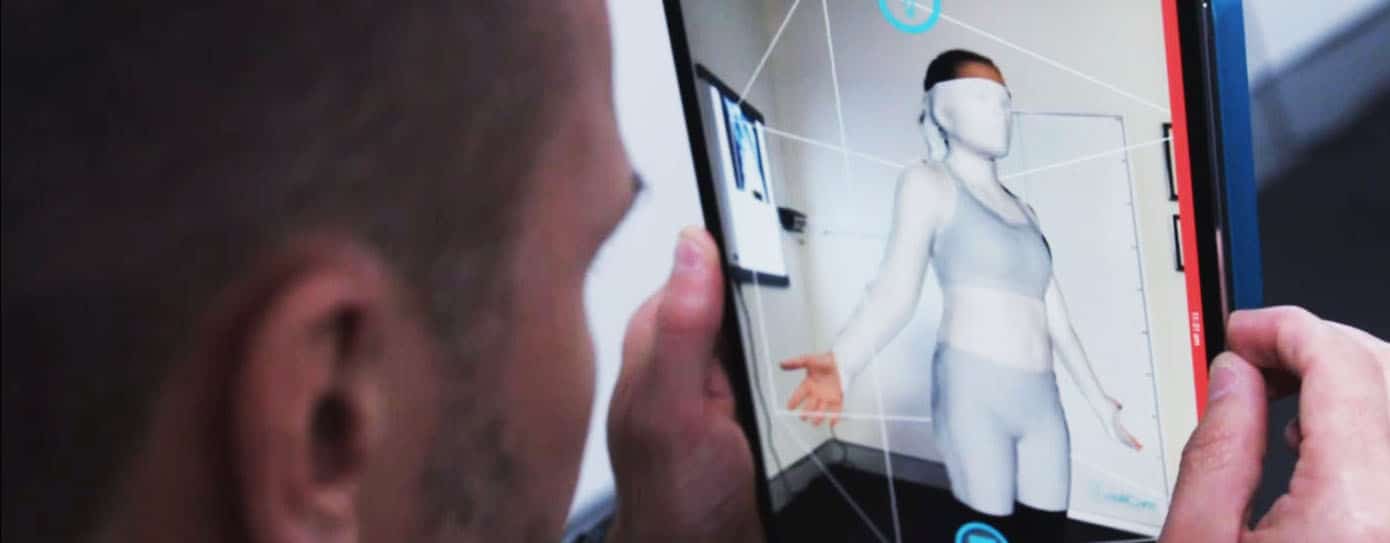
Scoliosis surgery is a major surgery, and is a decision that should not be taken lightly nor made without first considering all options. Before moving forward with the surgery, one must consider and thoroughly examine all potential scoliosis surgery side effects in comparison with the potential benefits one may gain from having a major spine operation.
This article will discuss scoliosis surgery side effects and other things that should be taken into consideration when making such an important decision. Keep in mind, this article is written for informational purposes only and is not a substitute for professional medical advice, diagnosis, or treatment.
When it comes to treating scoliosis, there are typically a few options presented. The patient is often told to watch and wait, consider traditional scoliosis bracing, or pursue surgery if their curvature is severe enough to warrant such an invasive procedure. Prior to recommending surgery, many professionals will recommend a traditional scoliosis brace, such as a TLSO (thoracolumbosacral orthosis) brace, to keep the curve from progressing.
The Boston brace, a TLSO brace designed to treat adolescent idiopathic scoliosis, is the most commonly used traditional scoliosis brace. [1] However, its effectiveness at slowing the progression of scoliosis remains highly controversial. The Providence brace, a brace worn only at night, is another type of brace used to treat scoliosis.
One study comparing TLSO and Providence braces showed that 79% of patients using a TLSO brace progressed to surgery. [2] While the progression for those in the Providence brace was lower, the overall success rate of both braces was inferior compared to other bracing studies. If bracing does not prevent the progression of scoliosis, the curvature may worsen to the point of surgery being recommended.
Traditional braces use pressure points in an attempt to squeeze the spine into place. An alternative to traditional bracing is a 3D corrective brace. Corrective braces are custom designed for each individual patient. The ScoliBrace is used by some CLEAR-certified doctors as a compliment to the CLEAR approach.
“It works by guiding the body and spine into a posture that is the opposite of how the scoliosis is shaped.” [3]

While many patients are prescribed a scoliosis brace, research has shown that bracing with an accompanying scoliosis-specific exercise program has a much higher success rate. You may be asking yourself why many orthopedic doctors fail to prescribe exercises in addition to bracing. Is it because they have failed to keep up with modern research, they believe the patient will progress to the point of surgery regardless, or they are simply waiting for the child to mature enough to tolerate surgery without suppressing their growth?
I’m sure the answer varies from doctor to doctor, but research on the powerful effect of scoliosis specific exercises is plentiful. You can look it up yourself on Google Scholar by using terms like scoliosis exercises or scoliosis exercise program. By doing so, you’ll find science behind conservative and alternative scoliosis care.
When does scoliosis become severe enough that surgery is recommended? To fully understand the answer to this complex question, we must understand how scoliosis is classified. CLEAR Scoliosis Institute recognizes the classification of scoliosis as follows:
When a curve exceeds 40 to 45 degrees in a growing child, surgery is often recommended by medical professionals. [4] For adults who have reached skeletal maturity, the risk of progression is much lower, so surgery may not be recommended unless the curve is 50 to 55+ degrees. The risks and side effects associated with scoliosis surgery can be life-long; therefore, it is recommended that patients extensively research all of their options prior to moving forward with surgery.
Spinal fusion has been used as a treatment for scoliosis for nearly 100 years. [5] Today, there are still many different types of scoliosis surgery performed.
Scoliosis surgery has a high rate of complications. [4] Complications range from wound infection to screw misplacement. Another complex factor is that long-term risks have yet to be researched. While many patients experience positive results, that is not always the case.
Every surgery has risks associated with it, so before moving forward, the overall risk of the procedure should also be considered. According to Johns Hopkins Medicine, “Risks for minimally invasive spine surgery include:
These risks vary by procedure (the more invasive the procedure, the more severe the associated risks) and from patient to patient. Keep in mind that rod and fusion surgery is extremely invasive, so it is very important to discuss all risks associated with surgery with your healthcare provider before moving forward.
Side effects of scoliosis surgery include:
By undergoing scoliosis surgery, the mobility of the spine is permanently altered. Research shows that, “In each spinal surgery case there is an irreversible loss of the normal active range of movement in the spinal column.” [8]

This loss of mobility can range from mild to severe, depending on how much of the spine has been affected by the surgery. As the flexibility and mobility of the spine are reduced, pain often increases. [8]
Pain is one of the most common side effects of scoliosis surgery. In one study, 41% of scoliosis surgery patients stated their pain was not reduced as a result of the surgery. In fact, 26% were very unhappy with the outcome of their surgery. [8]
The level of surgical fusion appears to directly affect flexibility and pain levels post surgery. [9] Discomfort and pain associated with scoliosis surgery are especially problematic in thin patients due to added pressure in certain areas of the spine. [8]
Pain is also the primary reason patients who have received scoliosis surgery undergo re-operation - in an attempt to reduce their pain.

As with any surgery, infection is a risk and concern. In fact, surgical site infections are the number one reason patients are readmitted to the hospital following surgery. [10] If a surgical site infection develops, the duration and cost of the hospital stay increases. [11]
Post-surgical infections may be present for months or even years in patients who undergo scoliosis surgery. In fact, infections have been detected eight or more years post scoliosis surgery.[7] Delayed infections are described as those with a time of presentation greater than two years post-operation. In a study of 489 patients who underwent scoliosis surgery, 4.7% experienced a delayed infection. [12]
While an individual’s physical quality of life is important, psychological quality of life is equally important. In a study examining the quality of life for patients who underwent the placement of a Harrington instrument, it was concluded that, “The psychologic health status is, however, significantly impaired.” [7] These effects can be life-long and detrimental.

The primary goal of scoliosis surgery is to stop the progression of the curve, but even with surgery, it is possible for the curve to progress. In some cases, surgery can actually lead to increased spinal deformity.
Although rare, neurological damage can be a serious side effect of scoliosis surgery. One study indicates, “Symptoms of neurological damage post-surgery include: partial or total paraplegia, quadriplegia, or peripheral nerve deficit.” [8]
At CLEAR Scoliosis Institute, we understand that not everyone is comfortable with the thought of having surgery. If you would like to explore alternative non-invasive treatment options, we recommend visiting a CLEAR-certified doctor.
CLEAR Scoliosis Institute has developed an innovative and specialized chiropractic treatment protocol that improves scoliosis, reduces chronic pain, and alleviates related health conditions through customized treatment plans that don’t include surgery, drugs, injections, and other invasive medical procedures or equipment. Before recommending any treatment, a CLEAR-certified doctor will conduct a thorough exam.
If treatment is recommended, a variety of methods are used, including adjustments, in-office therapy, and custom prescribed at-home scoliosis specific exercises. The exercise-based protocol where patients learn custom-designed exercises they can do in the comfort of their home is a major draw for patients looking for alternative options. The CLEAR method is all about empowering scoliosis patients to self treat at home while still having the guidance and supervision of an experienced scoliosis doctor.
In fact, 95% of scoliosis patients improve their condition and spinal curvature without surgery by receiving CLEAR treatment. [13]
At the end of the day, whether or not you have surgery for your scoliosis is a huge decision and one that is completely up to you. Before you make the decision to get scoliosis surgery, alternatives should be considered. For the majority of scoliosis cases, surgery is a choice, not a necessity. Bracing is often used in an attempt to slow the progression of the curvature before surgery is recommended; however, results have been inconclusive.
Traditional bracing may not be a recommended part of the CLEAR protocol; however, many CLEAR-certified doctors use the latest technology in custom designed corrective braces, such as the ScoliBrace, as a compliment to the CLEAR approach. While many patients can have their scoliosis managed by a CLEAR-certified doctor without the use of a brace, some patients (approximately 40%) benefit from bracing when used in addition to the scoliosis-specific exercise program.
If surgery is selected, there are many different side effects associated with scoliosis surgery. They range from loss of mobility to debilitating pain. These side effects are often life-long.
If you are looking to explore alternative non-surgical treatment options, you should visit a CLEAR Scoliosis Center to be evaluated by a CLEAR-certified doctor and learn more about your alternative options.
[3] ScoliBrace for Kids and Teens
[4] Rate of complications in scoliosis surgery – a systematic review of the Pub Med literature
[5] Impact of spine surgery on signs and symptoms of spinal deformity
[6] Minimally Invasive Scoliosis Surgery for Children
[7] Quality of life and back pain: outcome 16.7 years after Harrington instrumentation.
[8] Rate of complications in scoliosis surgery – a systematic review of the Pub Med literature
[11] Surgical Infection - an overview
[12] Delayed infections after posterior TSRH spinal instrumentation for idiopathic scoliosis: revisited.
Disclaimer: The author’s views are his or her own and may not reflect the views of CLEAR Scoliosis Institute.

CLEAR provides a unique and innovative way of understanding scoliosis. Sign up to receive facts and information you won’t find anywhere else.
